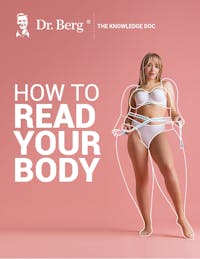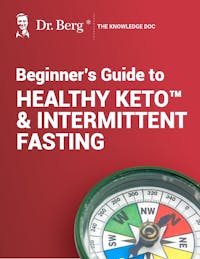The Fastest Way to Get Rid of Hip Pain

How to Read Your Body
Learn to recognize common symptoms and uncover their underlying health issues
Understand the signs of nutrient deficiencies to manage your health
Explore the four metabolic body types and the core factors that influence them
Interpret your body's signals from head to toe to identify potential health concerns

How to Read Your Body
Learn to recognize common symptoms and uncover their underlying health issues
Understand the signs of nutrient deficiencies to manage your health
Explore the four metabolic body types and the core factors that influence them
Interpret your body's signals from head to toe to identify potential health concerns

How to Read Your Body
Learn to recognize common symptoms and uncover their underlying health issues
Understand the signs of nutrient deficiencies to manage your health
Explore the four metabolic body types and the core factors that influence them
Interpret your body's signals from head to toe to identify potential health concerns

How to Read Your Body
Learn to recognize common symptoms and uncover their underlying health issues
Understand the signs of nutrient deficiencies to manage your health
Explore the four metabolic body types and the core factors that influence them
Interpret your body's signals from head to toe to identify potential health concerns

How to Read Your Body
Learn to recognize common symptoms and uncover their underlying health issues
Understand the signs of nutrient deficiencies to manage your health
Explore the four metabolic body types and the core factors that influence them
Interpret your body's signals from head to toe to identify potential health concerns

How to Read Your Body
Learn to recognize common symptoms and uncover their underlying health issues
Understand the signs of nutrient deficiencies to manage your health
Explore the four metabolic body types and the core factors that influence them
Interpret your body's signals from head to toe to identify potential health concerns

Beginner’s Guide to Healthy Keto & Intermittent Fasting
Receive a step-by-step guide to starting Healthy Keto® and intermittent fasting
Learn about foundational principles and best practices for beginners
Get detailed visual guidance on portion sizes and meal composition
Discover how to set achievable goals and monitor your progress
Find practical tips for overcoming common challenges and staying motivated

Beginner’s Guide to Healthy Keto & Intermittent Fasting
Receive a step-by-step guide to starting Healthy Keto® and intermittent fasting
Learn about foundational principles and best practices for beginners
Get detailed visual guidance on portion sizes and meal composition
Discover how to set achievable goals and monitor your progress
Find practical tips for overcoming common challenges and staying motivated

Beginner’s Guide to Healthy Keto & Intermittent Fasting
Receive a step-by-step guide to starting Healthy Keto® and intermittent fasting
Learn about foundational principles and best practices for beginners
Get detailed visual guidance on portion sizes and meal composition
Discover how to set achievable goals and monitor your progress
Find practical tips for overcoming common challenges and staying motivated

Beginner’s Guide to Healthy Keto & Intermittent Fasting
Receive a step-by-step guide to starting Healthy Keto® and intermittent fasting
Learn about foundational principles and best practices for beginners
Get detailed visual guidance on portion sizes and meal composition
Discover how to set achievable goals and monitor your progress
Find practical tips for overcoming common challenges and staying motivated

Beginner’s Guide to Healthy Keto & Intermittent Fasting
Receive a step-by-step guide to starting Healthy Keto® and intermittent fasting
Learn about foundational principles and best practices for beginners
Get detailed visual guidance on portion sizes and meal composition
Discover how to set achievable goals and monitor your progress
Find practical tips for overcoming common challenges and staying motivated

Beginner’s Guide to Healthy Keto & Intermittent Fasting
Receive a step-by-step guide to starting Healthy Keto® and intermittent fasting
Learn about foundational principles and best practices for beginners
Get detailed visual guidance on portion sizes and meal composition
Discover how to set achievable goals and monitor your progress
Find practical tips for overcoming common challenges and staying motivated
Millions of people experience hip pain, a common ailment that can significantly impact daily life.
It can stem from a variety of factors, from muscle strains to underlying medical conditions, leaving many searching for how to fix hip pain.
But before you reach for pain medication, several natural approaches may help alleviate your discomfort and get you moving more freely again.
I've worked with many patients who were told their only option for hip pain was medication or even surgery. It's important to address hip pain holistically.
This involves examining your lifestyle, including diet, exercise routine, and posture. You should also address any potential underlying issues that may contribute to your discomfort.
Understanding Hip Pain: It's Not Always Just the Joint
While many think of the hip simply as a ball-and-socket joint, the true story is a bit more complex. When discussing how to fix hip pain, you must look beyond the joint itself.
There are a multitude of muscles, tendons, and ligaments surrounding the hip joint that are instrumental in its proper function.
An often-overlooked aspect is that hip pain can be referred to as pain.
This means the pain you feel in your hip originates from another area entirely. I've found this is especially common with lower back issues and problems stemming from the SI joint.
Therefore, the approach to fixing hip pain needs to be comprehensive, targeting the hip joint, surrounding structures, and potential pain referral points.

A Three-Pronged Approach to How to Fix Hip Pain: The Power of the Opposite Side
Over the years, I've found a surprising approach to hip pain relief involves focusing on your body opposite from where you experience pain.
It may sound counterintuitive, but hear me out - it's all about restoring balance. Here's how it works:
Step One: Release Tension through Massage
If you have right-sided hip pain, gently massage the left side of your hip.
You can use your fingers or a tennis ball for this, applying light pressure and working in circular motions.
This technique targets trigger points and can be surprisingly tender on the side opposite your pain - a key indicator that you're on the right track.
Many times, over-the-counter pain relievers only mask the symptoms.
Spend at least two minutes massaging the area to help relieve hip pain with increased blood flow.
Step Two: Address Muscle Attachments
Remember those important muscles surrounding the hip joint? Well, they need some attention too.
Above the hip bone, a muscle is frequently tight in individuals with hip pain. Find the corresponding spot on the side opposite your pain.
Use your fingers or a foam roller to massage this muscle, working from the top of your hip bone down towards your thigh.
Step Three: Target the Iliopsoas Muscle
Deep within your abdomen, on the opposite side of your hip pain, lies the iliopsoas muscle.
This crucial muscle directly connects your spine to your leg, and tension here often contributes to hip pain.
To target it, find the point on the inside of your abdomen that feels most tender when you apply light pressure.
Gently massage this area, working your way down from the hip bone. While these three steps can be incredibly effective in addressing musculoskeletal causes of hip pain, it's vital to be aware of other possibilities.
Exploring Other Potential Culprits of Hip Pain
If these techniques don't provide relief, there might be additional factors at play. I've observed that for many women, cysts on the ovaries can manifest as hip pain.
Additionally, the sacroiliac (SI) joint, which connects your sacrum to your pelvis, can become irritated or inflamed, leading to pain that radiates to the hip.
It's worth exploring these possibilities and seeking appropriate medical guidance if you suspect your pain might stem from something other than muscular imbalances.
Now, let's look at what the experts say about other common causes of hip pain:
Common Causes of Hip Pain: An Overview
Various factors can contribute to hip pain. These factors are often related to your age, activity level, and overall health:
Arthritis: Conditions like osteoarthritis and rheumatoid arthritis can cause inflammation and pain in the hip joint, leading to stiffness and limited range of motion.
Muscle strains: Overuse or injury can strain the muscles surrounding the hip joint, particularly during strenuous activities.
Tendonitis: Inflammation of the tendons that connect muscles to the hip bone, known as tendonitis, can occur due to repetitive use or overuse.
Bursitis: Inflammation of the fluid-filled sacs called bursae that cushion the hip joint can cause pain and discomfort. Sometimes, a groin pain will accompany the hip pain due to the location of the bursa.
Fractures: Falls or injuries can result in hip fractures, particularly in older adults.

Lifestyle Changes to Consider:
Beyond targeted massage, certain lifestyle modifications can contribute to how to fix hip pain:
Lifestyle Change | Potential Benefits |
Maintaining a Healthy Weight | Reduced strain on the hip joints, particularly for individuals carrying excess weight. |
Proper Posture & Body Mechanics | Minimize stress on the hips, promoting optimal alignment and preventing muscle imbalances. |
Stretching & Exercise | Increase flexibility, strengthen muscles supporting the hip joint, and improve overall hip stability and mobility. Working with a physical therapist on strength training and other physical activity can be beneficial. |
When to See a Medical Professional: Don't Ignore These Red Flags
While many instances of hip pain can be managed with home remedies and lifestyle modifications, some situations warrant the attention of your healthcare provider.
If you experience any of the following, schedule a visit with your doctor as soon as possible:
Intense pain that limits your ability to move or bear weight
Swelling or warmth around the hip joint
Sudden onset of pain following an injury
Numbness or tingling in your leg or foot
Fever or other signs of infection
Diet and Inflammation: Keto Garlic Bread for Joint Health
Managing inflammation through diet can help alleviate hip pain. Incorporating keto garlic bread into your meals offers a low-carb, anti-inflammatory option.
Garlic contains compounds that reduce inflammation, which can support joint health and potentially ease hip discomfort.
This simple yet effective dietary addition can be part of a holistic approach to managing hip pain naturally.
Conclusion
Knowing how to fix hip pain often goes beyond simply addressing symptoms.
By understanding the mechanics of your hip, exploring potential root causes, and incorporating natural approaches like targeted massage, you can empower yourself to find relief.
Applying ice to the affected area can help as well. As always, listen to your body and don't hesitate to seek professional guidance if needed.
Previous blog
Sprouted Flax Seeds vs Flax SeedsTags

Popular
08/21/2024
53.6K views
02/23/2025
45.4K views
11/18/2024
270.1K views
03/18/2024
11/21/2022




